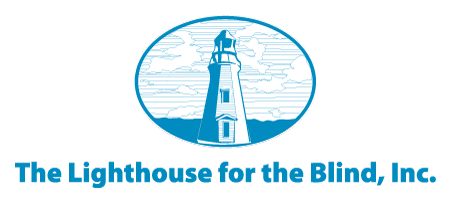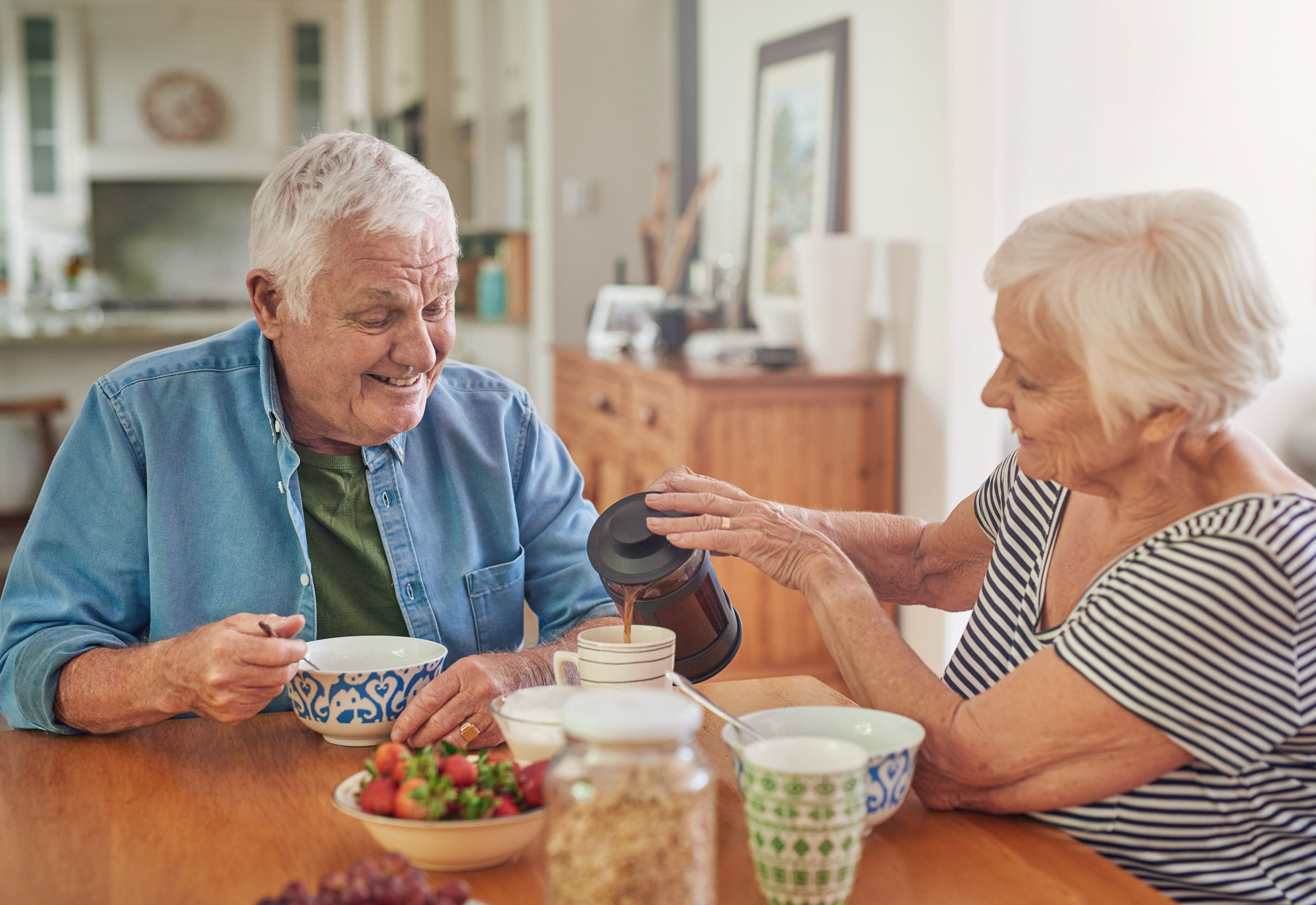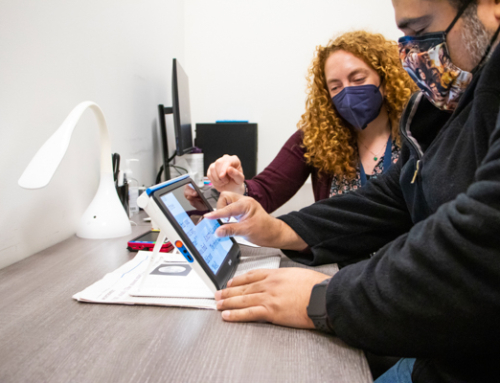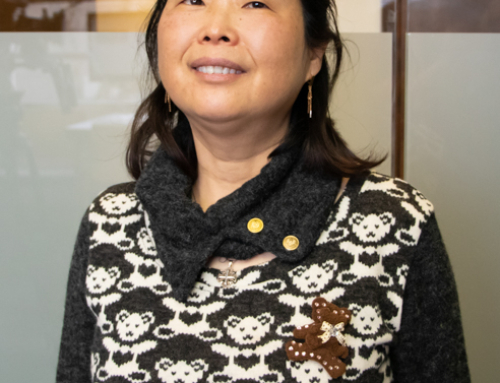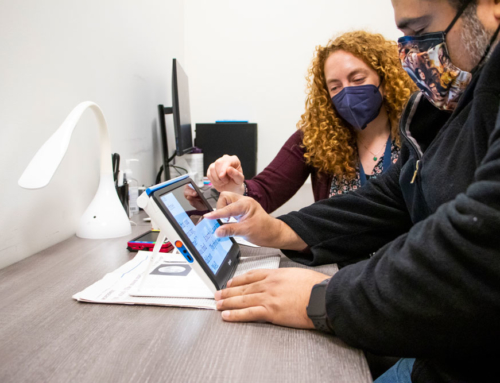There are many ways that a person living with low vision can continue to successfully manage their home, especially when it comes to everyday tasks like cooking and cleaning. The following are a few tips for adjusting to low vision or vision loss.
Pouring Techniques For Low Vision
Some daily tasks can become more difficult, especially in the kitchen. Here are some tips for adjusting pouring techniques when dealing with a visual impairment.
Maintain contact
Feel the spout of the container you are pouring the liquid from. Place the spout directly on the inside rim of the cup. Keep the spout in contact with the rim while tipping the container to pour. This technique will ensure you don’t miss the cup when pouring. To ensure containment of any spills, place the cup on a plate or tray with raised sides.
Listen
The sound is loud and clear when you first pour liquids into a cup or glass. Then as the cup or glass fills, the sound fades out, indicating the cup or glass is full.
Feel the weight
The weight of the glass or cup indicates whether it is full.
Feel the temperature
Feel the outside of a glass, cup or container to see whether the liquid inside is hot or cold. If you are pouring hot liquids, using a liquid level indicator is ideal.
Use your thumb or finger
Place your thumb or index finger over the rim of the glass or cup as you are pouring. When the liquid reaches your thumb or finger, stop pouring. Use this technique with cold liquids only.
Use a liquid level indicator
A liquid level indicator hangs on the side of a cup and buzzes when the liquid is near the rim. Place the prongs of a liquid level indicator (such as the EZFill) inside a glass or cup. When the liquid reaches the prong and buzzes, stop pouring.
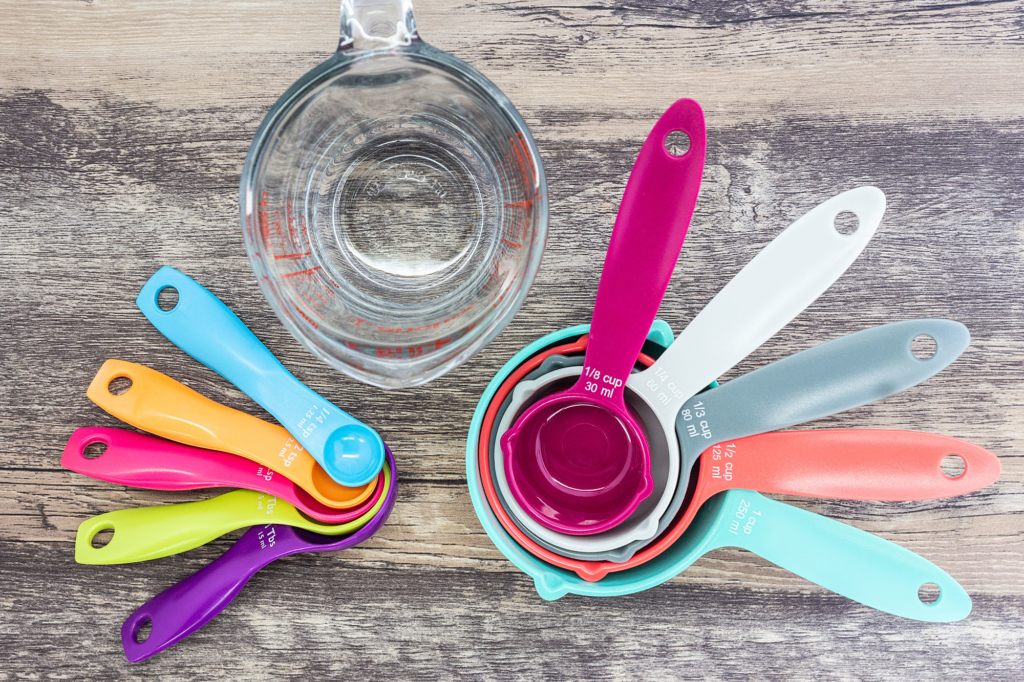
Sets of kitchen measuring tools including a glass cup, and plastic spoons and cups nested together.
Measuring Liquid and Dry Ingredients with Low Vision
Mark measurements on a large glass measuring cup with hard-drying tactile paint or assorted color tabs. Fill glass measuring cups in front of a contrasting background. For example, measure flour in front of a black background. Do the opposite for dark-colored ingredients. The contrast will help you see the food item better. You can make your own backgrounds easily with a piece of white or black construction paper.
An even easier way to measure is to use ‘nesting’ measuring cups. Memorize which cup is which (biggest is 1 cup, next is ½ cup, and so on) – then nest them to discern one size from another. You will always have the correct measurement using nesting cups or spoons.
Bend metal measuring spoons to form an ‘L’, with the scoop facing up. Dip the spoon into the substance. Wide mouth jars work very well for liquids and oils and make measuring with the adapted spoons much easier!
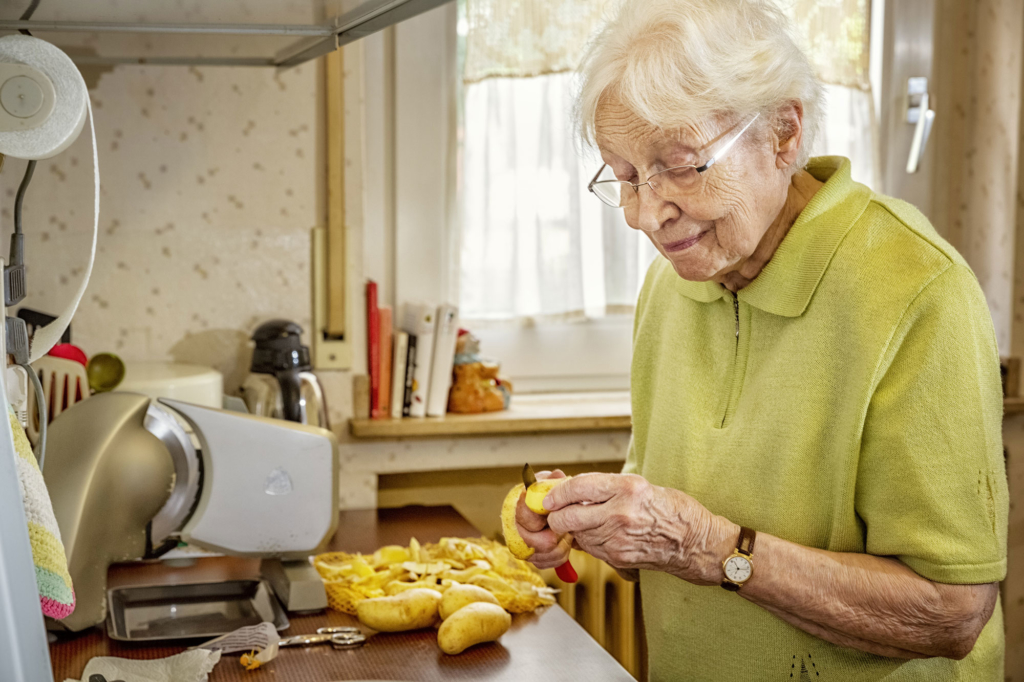
Older white woman standing at kitchen counter, peeling potatoes.
Peeling, Slicing, and Cutting with Vision Loss
Use dark or light-colored cutting boards. The contrasting colors will make it easier to see the food.
To cut meat, first feel for the edge of the meat with a fork. Then take the knife, line it up behind the fork and begin cutting.
To peel food, begin by feeling for one end of the item. This is where you will begin to peel. Next, turn the item counterclockwise while peeling or clockwise if you are left-handed.
Using Dials on Appliances with Low Vision
Use bump dot stickers, colored glue, puff paint or Velcro to mark the settings you use most. The raised dots help you set temperatures by touch. The same method may be used for microwave ovens, washer/dryers, thermostats, stove top controls, and ovens. Some appliance companies have braille overlays for stoves and microwaves. Place additional task lighting in your work area to help illuminate appliance buttons and dials to relieve eye strain.
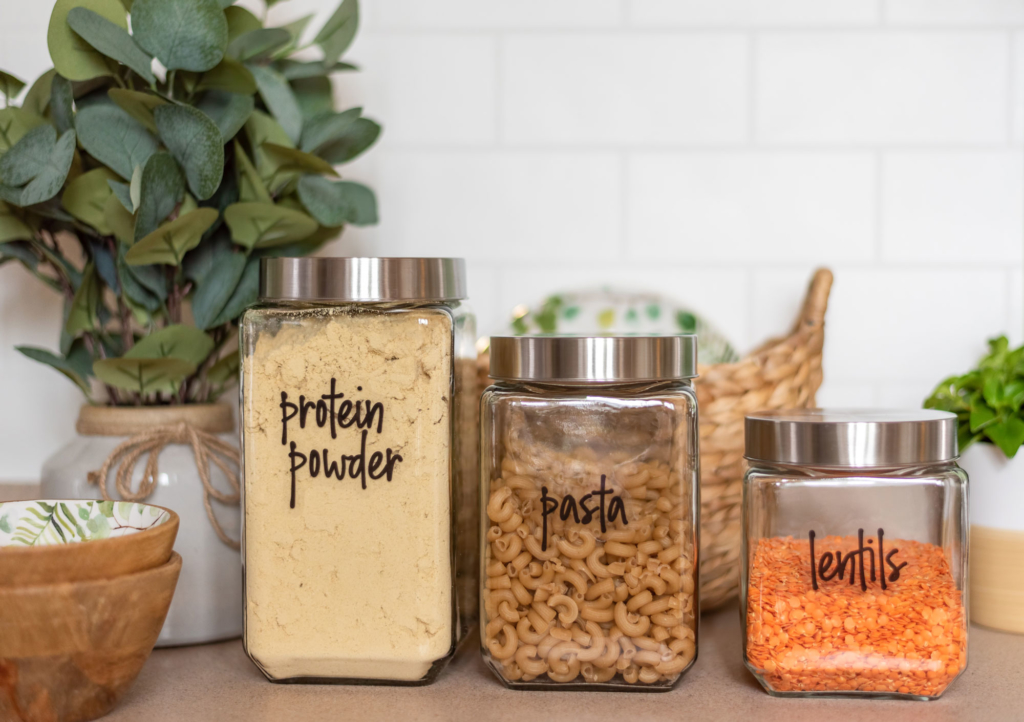
Jars on top of a counter, one with protein powder, second pasta, third lentils.
Organization and Labeling for Vision Loss
Labeling techniques to identify food, medications and other items include: strategically placed rubber bands, white or color index cards with bold print, large letters and/or color coded tabs or tape. You can also use an audio labeler, such as the ‘Pen Friend’ to record labels and place them on items in your home; touch the label with the Pen Friend and hear exactly what that item is.
Housekeeping with Low Vision
Organize a general storage area for ease in locating cleaning items.
Use a cart or basket to store and transport cleaning equipment and products from the storage area to various parts of the house.
When you vacuum or sweep, divide each room into sections, using furniture and walls as reference points. Then work in a systematic, grid pattern as you clean each section.

An elderly woman with grey hair is sitting at a desk with a book in front of her and a lamp glowing on the desk next to her.
Lighting Tips for Vision Loss
Lighting can make all the difference when performing daily tasks. Bring the light closer to the task or work area to get the maximum benefit. Make sure the ‘task light’ has a shade which allows no light to pass through it, thereby reducing glare and directing the light directly down onto the task at hand. Newer LED lights, as well as fluorescent lights are inexpensive and energy efficient ways to improve lighting in your home. To learn more about how lighting affects vision, visit our blog on lighting >>
Needle Threading/Mending for Low Vision
Thread needles with special needles and needle threaders that have been designed for people with low vision to make threading needs easier. Self-threading needles, as well as gadgets like the ‘Infila Threader’ make threading even the smallest needles possible for anyone.

Large print QWERTY keyboards. One is black and white, and the other is black and yellow.
Lighthouse Low Vision Store
These tips for adjusting to vision loss can be paired with items from our Low Vision Store. You can find many of the items mentioned here and much more at our Low Vision Store. The store is co-located within the Low Vision Clinic, where you can purchase the equipment you need for living an independent life. Due to COVID-19 the Low Vision Store is not currently open for walk-ins. However, we are happy to assist and take orders via phone.
Here is a sampling of the products our store carries: High-powered reading glasses, handheld and stand magnifiers, as well as electronic camera magnifiers, talking watches and clocks, white canes for safe and independent travel, a variety of adaptive aids for the kitchen and other in-home areas, quality sun glasses/glare protection, task lighting, large button telephones, remotes, recorders, and much more.
We look forward to being open for walk-ins, but at this time, we can take orders by phone or make appointments to visit the store. For questions or for more information, please call (206) 436-2228.
For more information on living with vision loss, read about the services offered by Lighthouse Low Vision Services.
